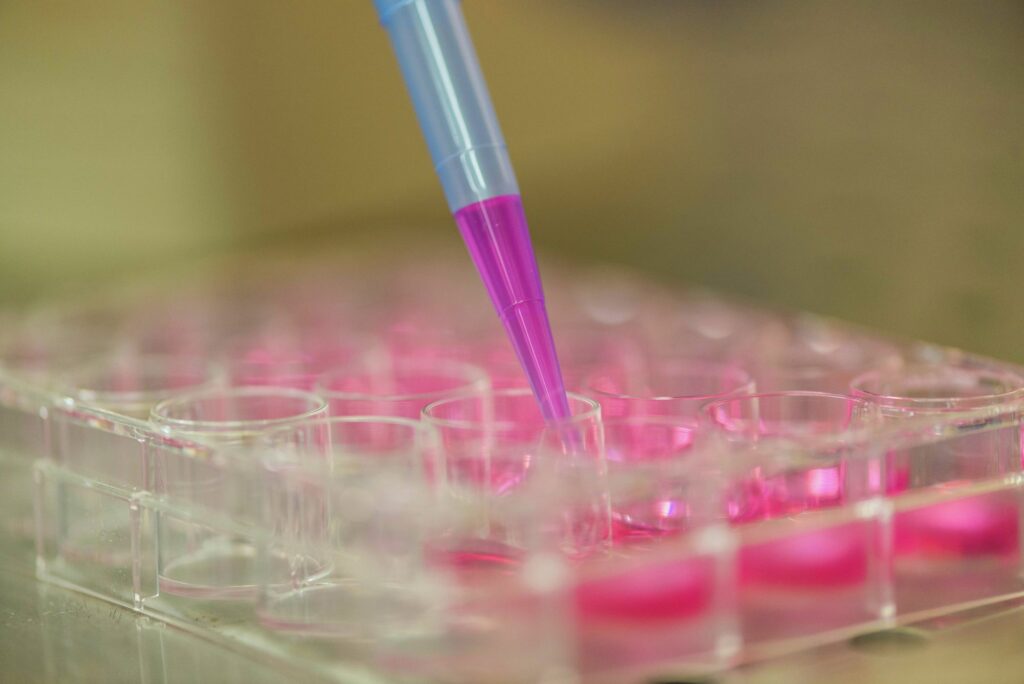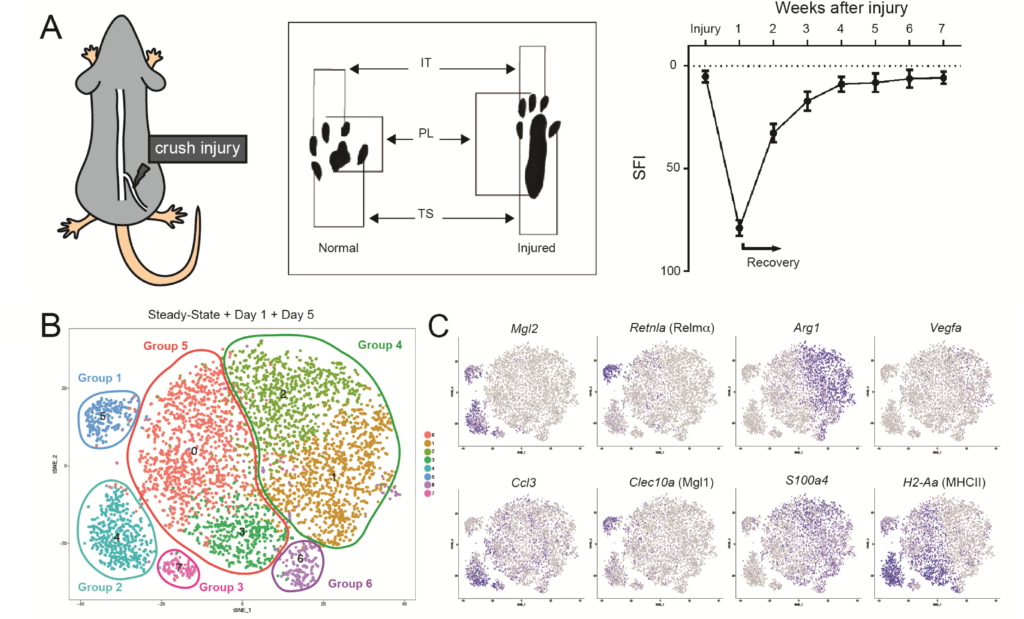
Dr. Elke Ydens and Prof. Vincent Timmerman (Peripheral Neuropathy Research Group), together with colleagues from Ghent University and the VIB, have discovered new macrophage subsets that are distinctly localised in peripheral nerves. The peripheral nervous system (PNS) refers to parts of the nervous system outside of the brain and spinal cord. While the immune cells of the central nervous system (CNS) have been extensively studied, little is known about the specific immune cells, such as macrophages, that protect the PNS.
Our researchers studied a crushed peripheral nerve injury and investigated the specific role of the immune system in repairing this nerve damage. They found that the peripheral nerve appears to have a unique immune environment. Using single-cell transcriptomics, which measures the gene expression levels in individual cells, they characterized two specific macrophage populations resident in the PNS. These PNS-resident macrophages are completely different from the CNS-resident microglia. Using microscopy, the researchers found that the two subsets of macrophages are anatomically separated, as they occupy either the epineurium (the outermost layer of connective tissue surrounding a peripheral nerve) or endoneurium (the layer of connective tissue around the myelin sheath of each nerve fiber).

Nerve crush injury model (left) and a footprint diagram (middle), which was analyzed at different time points following the crush injury, and results in a typical sciatic functional index (SFI) score (right). Gating strategy to identify macrophages that were sorted at different time points after crush injury (color images). Transcriptional profiling was performed on different sorted macrophage populations at different time points after injury.
Our researchers characterized the macrophage response and found that the endoneurium resident macrophages, but not epineurium resident macrophages, are primarily activated. The endoneurium macrophages increase their production of monocyte-attracting chemokines (small proteins secreted by cells that influence the immune system), which recruits monocytes to the injured nerve. These recruited monocytes form the dominant macrophage population during the nerve repair process. After the injury, these recruited macrophages adopt the resident PNS macrophage gene expression profile and remain in the PNS.
This study showed that, in contrast to the CNS, the PNS is permissive to the infiltration and engraftment of monocyte-derived macrophages upon injury. The two subsets of PNS-resident macrophages respond differently to the nerve injury, which suggests that they may each play a unique role in protecting peripheral nerves. Future studies will try to understand the role of these macrophages in health and disease, with a specific focus on peripheral neuropathies. A better understanding of these unique immune cells could lead to more effective treatments for patients with nerve damage or nerve dysfunction.
This study was performed by Dr. Elke Ydens (UAntwerp), Dr. Bob Asselbergh (UAntwerp and VIB), Prof. Vincent Timmerman (UAntwerp), Prof. Sophie Janssens (Ghent University and VIB), Prof. Martin Guilliams (Ghent University and VIB) and Prof. Marco Prinz (University of Freiburg). It was published in the prestigious scientific journal Nature Neuroscience.
